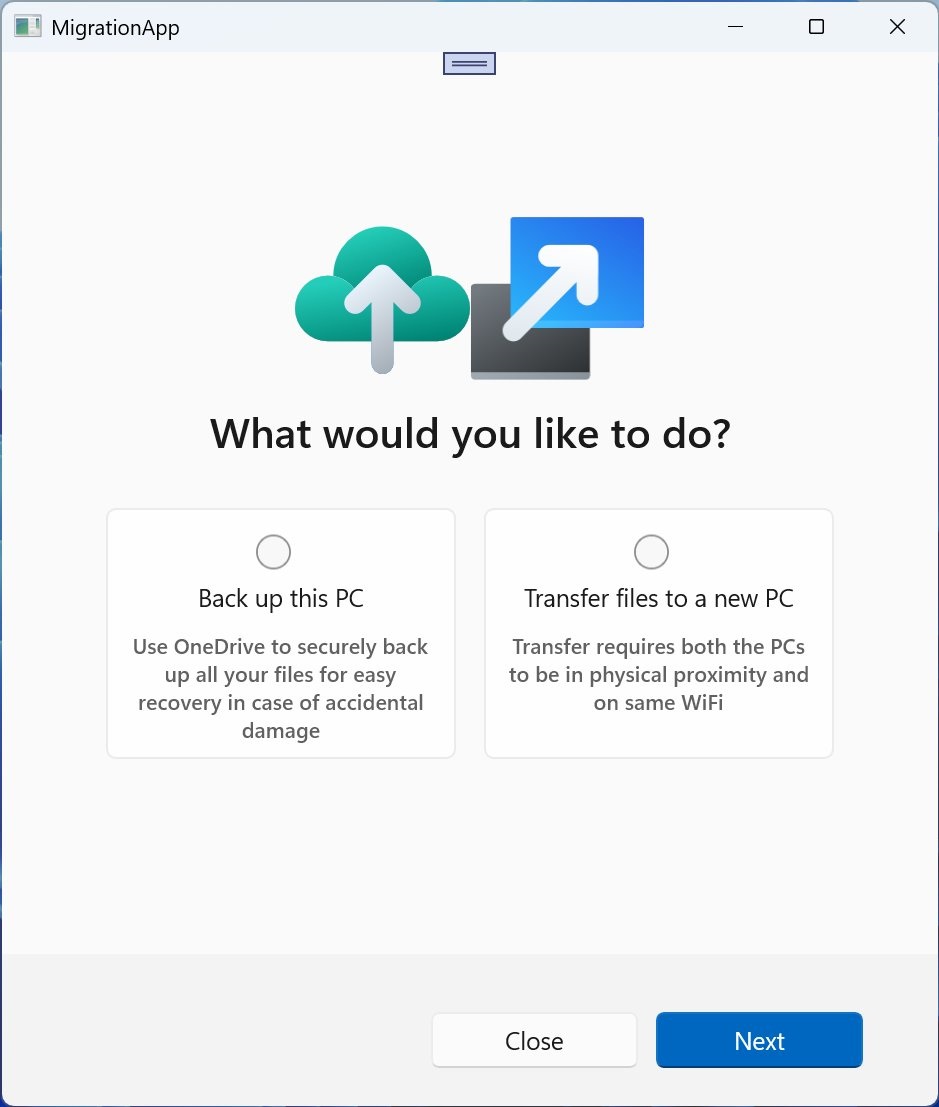
Source: a_donglee
In the Windows 11 preview build, Microsoft is developing a new backup and transfer tool. While the tool has yet to be officially released, developers have already reverse-engineered its UI from placeholders reserved by Microsoft, granting us an early glimpse of its design.
The previous backup tool developed by Microsoft was entirely reliant on OneDrive, supporting only the backup of user personal data and applications installed via the Microsoft Store. Upon testing, we found it to be rather underwhelming and of limited practicality.
This new iteration introduces a transfer function that allows users to migrate data to a new Windows 11 PC. However, it remains unclear whether the tool will support the migration of Win32 applications, including their data and registry entries.
For a truly seamless migration experience, the ability to transfer Win32 software, along with its data and registry configurations, is essential. This would effectively replicate the contents of the old PC onto the new one, eliminating the need for manual exporting and importing of Win32 application data.
On the backup front, the tool still relies on OneDrive. Even with a subscription, OneDrive storage is capped at 1TB, which may prove insufficient for users with large data volumes, potentially filling up the entire allocated space.
For data migration, Microsoft offers a local network transfer method, which operates via Wi-Fi. Users can initiate the process by enabling Wi-Fi, establishing a connection, and verifying the transfer through a digital confirmation. However, the efficacy of this feature can only be assessed once it becomes officially available.
Via: Dongle